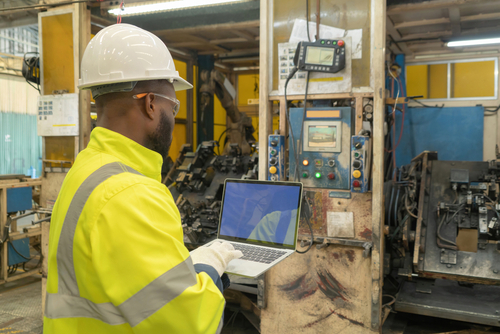“With maintenance data, you know where you’ve been, where you are, and where you’re heading,” was written on a slide at the start of a recent webinar on facilities maintenance data entitled “Turning Maintenance Data into Actionable Insights” hosted by Facilities Management Advisor and sponsored by TMA Systems. “And my question is, do you? Do you have the time to look at that data?” asked Harry Kohal, Managing Director of Eagle Support for Eagle Technology, a TMA Systems Company, who spoke during the webinar. He has 16 years of experience working with maintenance professionals.

Kohal continued by asking facilities managers, “What’s the quality of that data? Are you over or undermaintaining your equipment? Is the data that you have, the system that you use, is it easy to analyze the information that it contains?”
Do You Trust Your Data?
In a webinar audience poll, almost 92% of participants stated that they did not trust their organization’s maintenance data. Facilities managers who do not trust their data should get a new system to collect their information.
Kohal said that trusted maintenance data is important for three main reasons:
- Prevents downtime and save costs on potential problems, as well as adheres to OSHA and other regulatory agency rules.
- Identifies problems before they become serious and predicts future breakdowns.
- Optimizes operations and streamlines processes by looking at real-time data.
Key Performance Indicators
Kinds of data that should be looked at, which are also called key performance indicators (KPIs), are important because they can bring maintenance to optimal levels. These KPIs show how maintenance tasks meet organizational objectives.
KPIs that should be examined include:
- Downtime – looks at the root cause of failure such as worn-out machines.
- Productivity – captures the amount of time it takes for people to do the job, as well as determines whether employees are following the standards and whether they get adequate training.
- Asset lifecycle – this is a huge issue if production does not allow maintenance access to the machines until they break down.
- Inventory – supply chain issues force maintenance departments to better determine what parts might be needed in the short and long term; determines that “on hand” counts are accurate.
Challenges
The largest challenges when working with maintenance data include:
- Human error – involves data consistency and clearly defining priorities.
- Technology adoption – using the proper software to easily analyze data and to identify problems before they occur.
- Knowledge transfer – inter-departmental communication as well as communication with other departments; properly train new employees.
Maintenance teams struggle to keep up with data management due to:
- Too many tools – the inability of tools to work together, which makes it difficult to see everything at once.
- Spreadsheets – using multiple spreadsheets for reporting rather than using a computerized maintenance management system (CMMS).
- No visibility – not knowing where maintenance data is and no way to determine whether data is accurate.
CMMS
According to Kohal, CMMS turns raw data into good data. Specifically, CMMS is a customizable digital dashboard tool that helps facilities managers at various organizations analyze, plan, and act. CMMS helps provide good maintenance data by streamlining processes. Good data also maximizes productivity by utilizing a user-friendly interface with search capabilities. Additionally, good maintenance data improves safety and compliance by tracking exceptions and corrective actions along with inspection history.
“The cost of a good-quality CMMS is far offset by the fines that you’re to get from OSHA,” Kohal said, explaining that CMMS will save money for organizations when it comes to their risk management.
A CMMS is not just beneficial for manufacturing companies but also for other organizations like educational facilities.
“More and more top-level organizations are understanding that maintenance is not something that is an afterthought; it’s a critical component to running a successful business,” he said.
Businesses that want to succeed need to work with good-quality maintenance data.
To learn more about turning maintenance data into actionable insights, check out the FREE webinar on-demand by clicking here.
